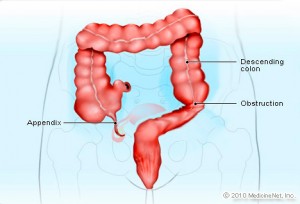Have you ever wondered why we have an appendix? No? Me either. I didn’t ask this question until I was lying in the Mount Nittany Hospital waiting for an emergency removal of my own. After three hours of what felt like glass bottles being broken in my stomach, I finally left my comfy dorm bed in East Halls and traded it for a hospital bed. Four tests and an IV later, the nurse came in and told me that my appendix needed to be removed immediately. My surgeon, Dr. Mona Duncan, assured me that she does this procedure up to ten times a week. This shocked me. Is it true that we don’t need our appendix? If so, why did evolution fail to fix this problem?
It has always been said that the appendix is vestigial. If you were to type in “vestigial structure” into a Google search, the first thing that would come up as an example would be a human appendix. Since Darwin, it has been a widespread belief that there is truly no purpose for it. I went on to research whether or not this was true.
I came across a popular study done by William Parker and his team at Duke University. They decided to challenge everything people have believed about an appendix. They tested whether or not the appendix has a function. They first examined removed appendixes that were not infected. Turns out, people periodically get their appendix removed and Parker was able to get ahold of them, along with tissue from the digestive tract. After studying both of the tissue, they discovered that the growing colonies of good bacteria were more prevalent in the appendix than anywhere else in the digestive tract. This bacterium helps fight and prevent diseases, but when there is a severe infection, the bacteria in the gut can only do so much. This is when the role of the appendix comes into play. The safe house of stored bacteria that is located inside the appendix walls recolonizes the gut, helping the immune system beat the infection and getting the good bacteria to start growing there again.
Parker and his team also looked into animals who are closely related to humans and how their appendixes work. For example, Great Apes, the opossum, and the wombat all have appendixes that function very similarly to the human appendix. They also looked at animals that do not have an appendix, and found that as you get further and further back into the gut, you find a large collected amount of good bacteria. Speaking for most animals, they believe there is a region in the cecum where bacteria is collected and maintained for future use. Even though this may not be as effective as an appendix, the idea is still there. Parker’s team concluded that the appendix DOES have a function, rejecting Darwin’s hypothesis.
Since the appendix is still such a big mystery, its purpose still has yet to be completely solved. As we have learned in class, it will take years for an idea like Parker’s to become accepted. As there are many more studies that need to be done. Darwin has suggested that we have no use for something like an appendix anymore, but Parker’s research truly shows that it could have a role inside the human body.
According to the NCBI, there are 280,000 appendectomies preformed in the U.S each year. Personally, if I were to read this research before I got mine removed I would not have thought twice. Appendicits is extremely life threatening. Although Parker and his team has compelling evidence, modern medicine today can easily replace the job that Parker believes appendix once had.


